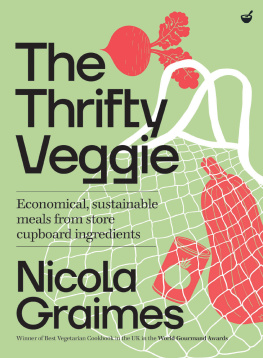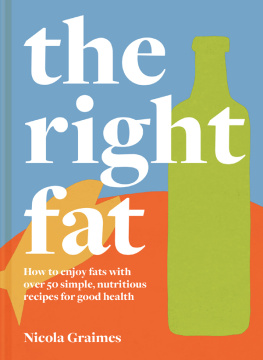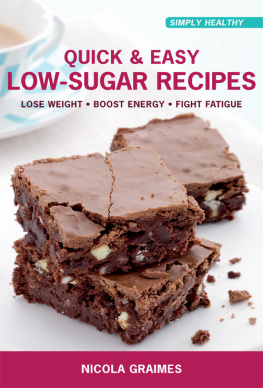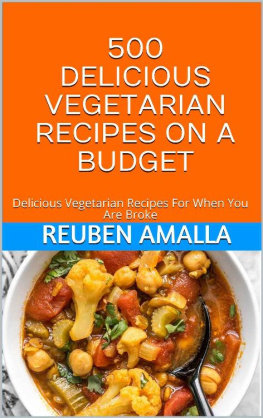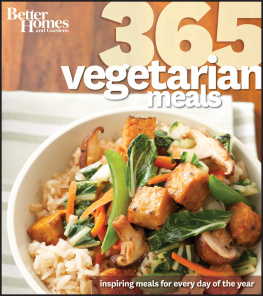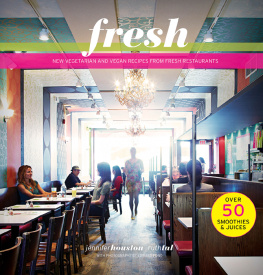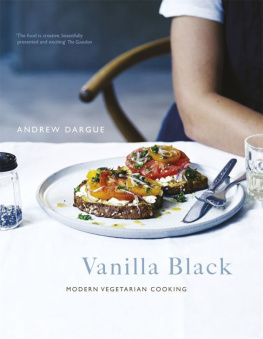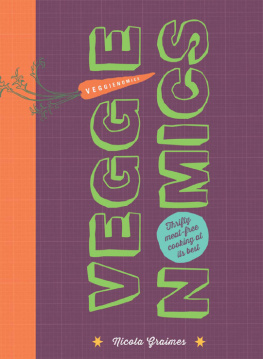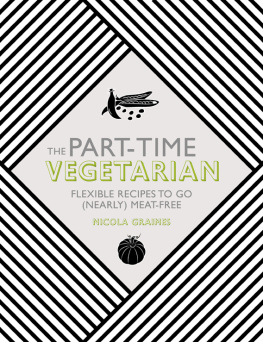

The Thrifty Veggie
Nicola Graimes
First published as Veggienomics in the UK and USA in 2014 by
Nourish, an imprint of Watkins Media Limited
Unit 11, Shepperton House, 8393 Shepperton Road
London N1 3DF
This edition first published in the UK and USA in 2021 by Nourish
Copyright Watkins Media Limited 2014, 2021
Text copyright Nicola Graimes 2014, 2021
Photography copyright Watkins Media Limited 2014, 2021
The right of Nicola Graimes to be identified as the Author of this text has been asserted in accordance with the Copyright, Designs and Patents Act of 1988.
All rights reserved. No part of this book may be reproduced in any form or by any electronic or mechanical means, including information storage and retrieval systems, without permission in writing from the publisher, except by a reviewer who may quote brief passages in a review.
Publisher: Grace Cheetham
Project Managers: Rebecca Woods, Dan Hurst and Ella Chappell
Editors: Liz Jones and Dan Hurst
Managing Designer: Glen Wilkins
Commissioned Photography: Toby Scott
Food Stylist: Jayne Cross
Prop Stylist: Lucy Harvey
Design: Francesca Corsini
Production: Uzma Taj
A CIP record for this book is available from the British Library
ISBN: 978-1-84899-388-4 (Hardback)
ISBN: 978-1-84899-389-1 (eBook)
10 9 8 7 6 5 4 3 2 1
Typeset in Cera and Walbaum
Printed in China
Publishers note
While every care has been taken in compiling the recipes for this book, Watkins Media Limited, or any other persons who have been involved in working on this publication, cannot accept responsibility for any errors or omissions, inadvertent or not, that may be found in the recipes or text, nor for any problems that may arise as a result of preparing one of these recipes. If you are pregnant or breastfeeding or have any special dietary requirements or medical conditions, it is advisable to consult a medical professional before following any of the recipes contained in this book.
Notes on the recipes
Unless otherwise stated:
Use medium fruit and vegetables
Use medium (US large) organic or free-range eggs Use fresh herbs, spices and chillies
Use granulated sugar (Americans can use ordinary granulated sugar when caster sugar is specified)
Do not mix metric, imperial and US cup measurements:
1 tsp = 5ml 1 tbsp = 15ml 1 cup = 240ml
nourishbooks.com
Contents
Introduction
I was so pleased to be given the chance to update this book, six years after it was first published. So much has happened during this time, but one of the most marked changes has been the number of people making the transition to being vegetarian and vegan, or cutting down on the amount of meat they eat.
We have all become much more aware of the cost of food, not only on our pockets but also in terms of the environmental impact of what and how we eat. Additionally, most of us are time poor, so it really can pay to plan ahead with our shopping and cooking whenever possible, rather than grab a pricey takeaway or ready-meal. My hope is that The Thrifty Veggie will help you be more efficient in the kitchen (making the most of ingredients is crucial when youre on a budget), with advice on shopping, stocking the storecupboard, making the most of your fridge and freezer, using up leftovers and cutting waste.
Enjoying what we eat, whether it is a meal weve made ourselves or one that has been made for us, is one of lifes true pleasures and is at the heart of this book. Here, youll find a collection of recipes that make use of readily available and budget-friendly storecupboard staples, such as beans, pulses, pasta, rice, noodles, grains and nuts. Then there are dairy, and non-dairy alternatives, super-versatile eggs and, of course, a meal wouldnt be a meal without fresh vegetables.
All the recipes have been created to be easy to make, use easy-to-find ingredients, are nutritious and, importantly, wont burn a hole in your pocket. Ive taken a back-to-basics approach, with recipes for making your own stock, spice mix, soft cheese, yogurt, preserves and pickles, as well as sprouting your own beans. These arent just fun and easy to do, they can also make economic sense. Geared to our busy lives and varying culinary demands, each chapter in the book includes recipes and suggestions for snacks, lunches and dinners. There are also suggestions for matching recipes if you are looking for a suitable side dish. Where a recipe uses a slightly more unusual ingredient, an alternative is given in case you cant find it. I also like to use the same ingredient in a few recipes, so you arent left with a bottle of something languishing at the back of the cupboard.
Figures suggest that, shockingly, in the West we throw away as much as a third of the food we buy so Ive included lots of simple thrifty, waste-reducing tips, from using up cheese rinds and slightly stale bread, to freezing herbs and making the most of leftovers. Its all about balancing the books, eating the best ingredients you can afford to buy, and cutting waste whenever possible. Every little helps.
First Steps...
Support independent shops, refill shops, farm shops, food markets and box schemes
Buy seasonal (and local) fresh produce when you can
Plan ahead every week it really helps to write down a list of meals (even if its just a list of the main evening meals). This makes shopping so much easier to organise, saves the pennies, helps to avoid waste and takes the pressure off cooking and eating well.
Stocking the Storecupboard
Storecupboard ingredients form the cornerstone of the recipes in this book. If you have a well-stocked storecupboard, youll find that you have the foundations of many a good meal, and only have to buy a handful of fresh ingredients to supplement them.
If you eat pasta, rice, beans, grains and lentils on a weekly basis it makes economic sense to buy them in bulk. If you dont eat them regularly enough to buy large quantities for yourself, it may be an idea to share large bags with family and friends.
There are more and more shops offering refills, where you can take your own container and fill it with exactly the quantity you need think beans, pasta, grains, nuts, seeds and so much more and you dont have to pay for fancy or wasteful packaging. They are also a great way of trying new foods without having to invest in a large packet of something you may not like.
To the basics, below, Id also like to add a few of my must-haves: tinned tomatoes, extra virgin olive oil, apple cider vinegar, English and Dijon mustard, nuts and seeds, tomato pure, mayonnaise, coconut milk and a collection of spices such as ground coriander, ground cumin, ground cinnamon, curry powder, chilli flakes, turmeric and smoked paprika. I could go on
Rice and Grains
A staple food for over half the worlds population, rice is a key part of many cuisines: think Italian risotto, Spanish paella, Indian biryani, Middle Eastern pilaffs or Japanese sushi, for a start. There is brown, black, red and white rice, medium-grain, long-grain, pudding-rice and more.
If youre cooking rice as a side dish or for fried rice, there are two main ways to cook it: the open boiling method, where you cover the rice with plenty of water then drain it when cooked, and the absorption method. I tend to go for the latter, as taught to me by cookery writer and rice expert, Sri Owen, as I find it gives perfectly cooked fluffy rice.
Next page
